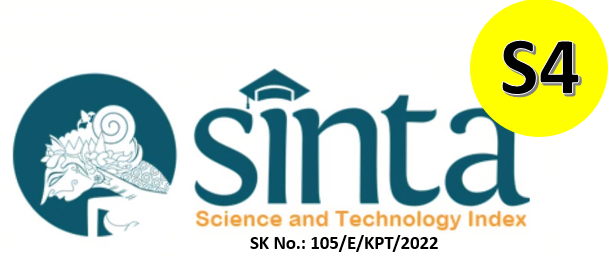Pemodelan Pencemaran Udara untuk Industri Kayu Lapis di Kabupaten Blitar
DOI:
https://doi.org/10.29080/alard.v8i1.1545Keywords:
aermod, air pollution, plywood industryAbstract
A research to model particulate emission was conducted in the plywood industry in Kendalrejo, Talun, Blitar Regency, East Java at an altitude of 273 masl. The industry already has an environmental pollution control unit, with an outlet through a chimney emitting an average emission of 0.14 g/s. The model simulation was carried out using AERMOD View software with data on wind direction and speed, solar radiation, temperature, clouds, and air pressure. The results show that the presence of the wood industry in Talun, Blitar Regency will have an impact on particulate emissions to areas in the east, southeast, west, and south, as the dominant wind direction. Dispersion modeling of particulate pollution with current conditions has resulted in dispersion with concentrations below the allowable limit in PP 22 of 2021. Modeling with several scenarios shows that the dispersion pattern can be maximized by increasing the chimney emission rate to 18 m/s, to minimize turbulence around the chimney and accelerate the reduction of particulate concentrations. Increasing the height of the chimney or increasing the diameter of the chimney will also affect the decrease in concentration in all directions so it becomes a recommendation that should be considered by the industry.
Downloads
References
Artikel Jurnal
Brink, J. A., & crocker, B. B. (1964). Practical applications of stacks to minimize pollution problems. Journal of the Air Pollution Control Association, 14(11), 449–454. https://doi.org/10.1080/00022470.1964.10468312
Feitosa, M., & Macêdo, M. (2020). Vehicle atmospheric pollution evaluation using AERMOD model at avenue in a Brazilian capital city.
Jittra, N., Pinthong, N., & Thepanondh, S. (2015). Performance evaluation of AERMOD and CALPUFF air dispersion models in industrial complex area. Air, Soil and Water Research, 8(2), 87–95. https://doi.org/10.4137/ASWR.S32781
Langner, C., Klemm, O., Langner, C., & Klemm, O. (2011). A Comparison of Model Performance between AERMOD and AUSTAL2000 A Comparison of Model Performance between AERMOD and. 2247. https://doi.org/10.3155/1047-3289.61.6.640
Nealipuri, P., Pradhan, M. N., Das, H. C., Mahapatra, R. N., & Das, B. (2018). Prediction of Air Pollutants Emitting from Chimney of A CHP Using CFD. Internatioal Journal of Scientific & Engineering Research, 9(4), 105–110.
Newby, D. E., Mannucci, P. M., Tell, G. S., Baccarelli, A. A., Brook, R. D., Donaldson, K., Forastiere, F., Franchini, M., Franco, O. H., Graham, I., Hoek, G., Hoffmann, B., Hoylaerts, M. F., Künzli, N., Mills, N., Pekkanen, J., Peters, A., Piepoli, M. F., Rajagopalan, S., … on behalf of ESC Working Group on Thrombosis, E. A. for C. P. and R. and E. S. C. H. F. A. (2015). Expert position paper on air pollution and cardiovascular disease. European Heart Journal, 36(2), 83–93. https://doi.org/10.1093/eurheartj/ehu458
Salva, J., Vanek, M., Gajtanska, M., Tonhauzer, P., & Duricov, A. (2021). An Assessment of the On-Road Mobile Sources Contribution to Particulate Matter Air Pollution by AERMOD Dispersion Model.
Seangkiatiyuth, K., Surapipith, V., Tantrakarnapa, K., & Lothongkum, A. W. (2011). Application of the AERMOD modeling system for environmental impact assessment of NO 2 emissions from a cement complex. Journal of Environmental Sciences, 23(6), 931–940. https://doi.org/10.1016/S1001-0742(10)60499-8
Sofiyana, Marinda Sari and Sholihah, M. (2021). Eksplorasi Liken di Sepanjang Jalan Diponegoro Kota Blitar Jawa Timur. SEMINAR NASIONAL SAINS DAN ENTERPRAINERSHIP VI TAHUN 2019.
US EPA. (2005). Revision to the guideline on air quality models: Adoption of a preferred general purpose (flat and complex terrain) dispersion model and other revisions. Federal Register, 70(216), 68218–68261.
Zabrocki, L., Alari, A., & Benmarhnia, T. (2021). Estimating the Influence of Wind on Air Pollution Using a Causal Inference Pipeline.
Zou, B., Zhan, F. B., Wilson, J. G., & Zeng, Y. (2010). Simulation Modelling Practice and Theory Performance of AERMOD at different time scales. Simulation Modelling Practice and Theory, 18(5), 612–623. https://doi.org/10.1016/j.simpat.2010.01.005
Sumber Elektronik
Blitar, B. K. (2020). Kabupaten Blitar Dalam Angka.
BMKG. (2022). Analisis Iklim dan Cuaca.
Peraturan Pemerintah No. 22 Tahun 2021 Tentang Penyelenggaraan Perlindungan dan Pengelolaan Lingkungan Hidup, (2021).
Published
How to Cite
Issue
Section
License
Copyright (c) 2022 Muhammad Abdus Salam Jawwad, Restu Hikmah Ayu Murti; Rizka Novembrianto

This work is licensed under a Creative Commons Attribution-ShareAlike 4.0 International License.
Authors who publish with this journal agree to the following terms:
- Authors retain copyright and grant the journal right of first publication with the work simultaneously licensed under a Creative Commons Attribution License that allows others to share the work with an acknowledgement of the work's authorship and initial publication in this journal.
- Authors are able to enter into separate, additional contractual arrangements for the non-exclusive distribution of the journal's published version of the work (e.g., post it to an institutional repository or publish it in a book), with an acknowledgement of its initial publication in this journal.
- Authors are permitted and encouraged to post their work online (e.g., in institutional repositories or on their website) prior to and during the submission process, as it can lead to productive exchanges, as well as earlier and greater citation of published work.



